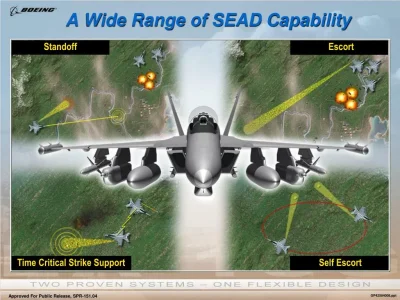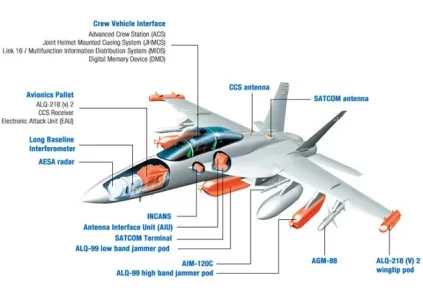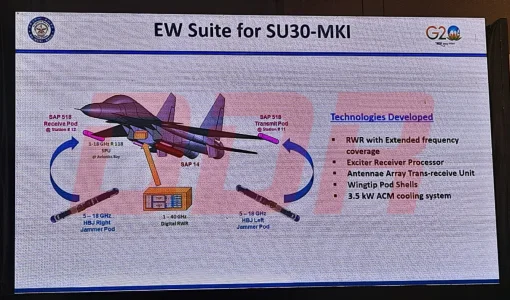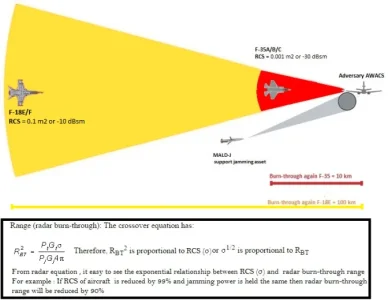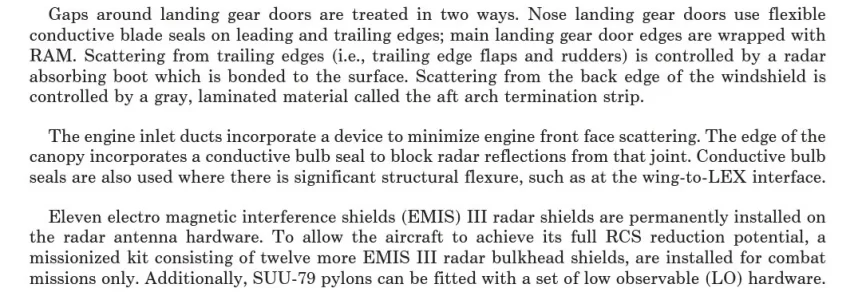For SEAD/DEAD based Operations, you typically need a very powerful EW platform to help jam & burn through enemy air defence Radars. Keep in mind that there are various methods of jamming used in modern warfare. Look at the Boeing EA-18G Growler as an example. It being larger than the LCA, more than twice as heavy and has two F414-GE-400 engines instead of just one GE F404 engine on the Tejas. Having two engines is a plus point as along with producing more thrust, it also generates far more electrical power which is necessary for the jammer to run on. Simply put: More power => More jamming.
View attachment 38540View attachment 38541
China has designed and built its own EW platform on the basis of the J-16 which it calls as J-16D. If we want something on the likes of the J-16D or EA-18G, then ideally we should convert a limited number of SU-30MKI to Growler configuration to perform SEAD & DEAD missions. For this, we need to equip our Flankers with a robust EW warfare suite which is already in the works as you can see in this slide.
View attachment 38542
But does that mean that the Tejas or its subsequent versions like the Mk-2 doesn't have any potential or room for growth to stand out as a powerful Electronic Warfare platform? Not really because compared to aircraft like the EA-18G, J-16D, the LCA has an advantage of boasting a smaller RCS owning to several RCS reduction features like the extensive usage of composites, small size, S-duct intakes. Yes the EA-18G also has S-duct intakes but as a whole, the RCS of LCA is magnitudes times less than that of either EA-18G or J-16D. From what I have read, the MWF will reportedly sport an RCS that is less than 1/4th of that of the current Mk-1 in service with the Indian Airforce.
So why all the talk about Jamming & RCS reduction? You see,
both Jamming & RCS have a synergy relationship. Read about "Radar burn-Through".
View attachment 38546
Incase you didn't understand the above diagram, I will explain it in a more simplified manner, basically the further away you are from your target, the more jamming power you will need to compensate for the distance. Jamming signals degrade & lose their strength with distance so ideally you need to be as close to your target as possible to maximize your jammer's strength. That is why if have a lower RCS, you can get closer to your target and as a result your jammer will be more effective as there is less distance between you and your target. Ideally speaking for future SEAD operations, instead of Tejas Mk-1 or Mk-2, the AMCA will probably prove to be the best because of its VLO aka stealth capabilities. The F-35 is supposed to be very effective in these kind of missions involving SEAD & DEAD, so if the F-35 is capable of it, so will be the AMCA when it arrives.


